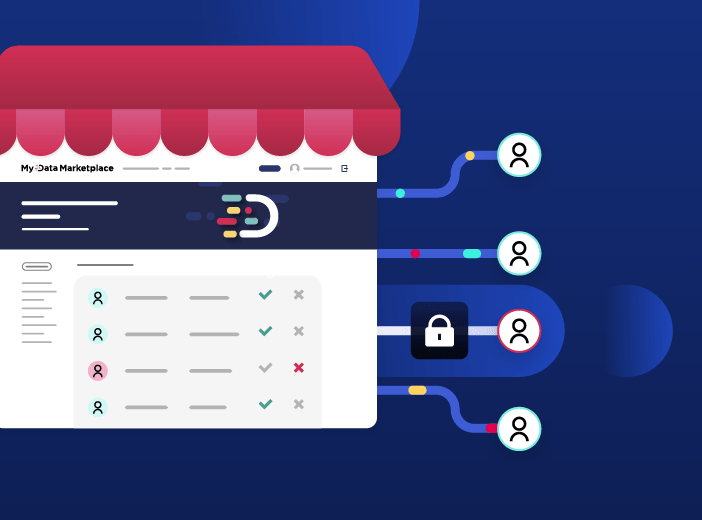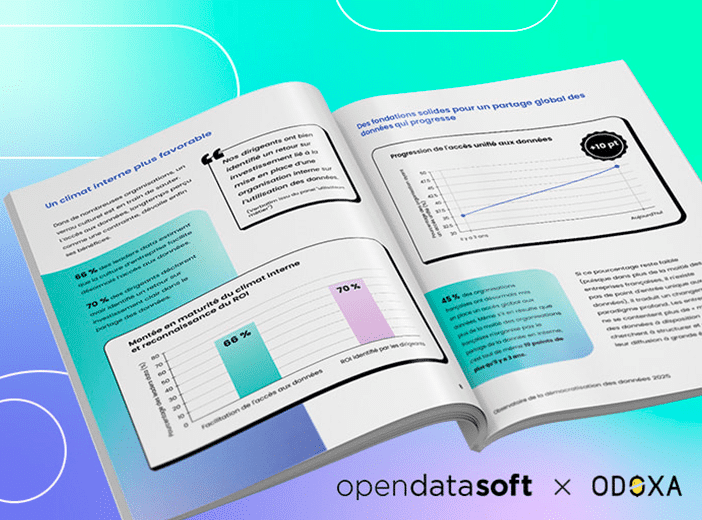Glossary
Self-service data
Self-service data enables everyone within an organization or ecosystem to independently access, query and gain insights from data.
What is self-service data?
A self-service data implementation enables everyone within an organization or ecosystem to access, query and visualize information, without requiring support from IT, business analysts or data professionals.
In self-service, data is normally available via a central data portal or catalog that is open to all employees, and can be accessed at any time. This collects and displays datasets from across the organization in a single place.
Self-service democratizes data access, providing employees or citizens with the ability to find, visualize, reshare and use relevant information on their own, gaining the insights they need to carry out their jobs or better understand the world around them. It is sometimes referred to as self-service business intelligence or self-service analytics.
What are the benefits of self-service data?
Self-service data puts information directly in the hands of users, opening up and democratizing insight. It provides six key benefits:
- It empowers people to become data-driven, allowing them to use data insights to work more effectively, and make faster, better-informed and more transparent decisions.
- It supports the shift to becoming a data-driven organization, increasing agility, responsiveness, and competitiveness.
- It creates a company-wide data culture that puts information, sharing, collaboration, and openness at the heart of the organization.
- It increases efficiency as employees no longer need to wait for reports and data to be prepared by others, freeing up resources and allowing process improvements.
- It reduces the load on IT/business analysts, enabling them to spend time on more strategic activities.
- It increases transparency, as data can be easily accessed and shared internally and across an organization’s ecosystem.
What are the challenges to self-service data?
Introducing self-service data requires businesses to overcome a mix of technology and organizational challenges:
Technology challenges:
Organizations have increasing volumes of data, from a growing variety of sources. All of this needs to be collected and made available centrally via the self-service portal. Moreover, data can be stuck in silos, within departments, and needs to be freed in order to be shared.
Data also has to meet quality standards, and be up-to-date and accurate, particularly if it is real-time data collected via sensors.
The self-service portal and visualization tools have to be easy to use by non-experts, without requiring constant support or months of training.
Organizational challenges:
- Culture: everyone in the company needs to understand the importance of data and be comfortable using it in their roles. That requires cultural change as well as extensive communication and training.
- Data literacy: employees need to be data literate, able to understand and interrogate data at a basic level to get best use from it.
- Openness: sharing data increases internal transparency – this can be a challenge in hierarchical or silo-based organizations that previously operated on a closed, departmental basis.
- Common vocabulary: different departments often use different terms for particular data elements, such as customers or sales. Organizations therefore need to adopt a common vocabulary to describe data.
- Governance: when data is shared, it still needs to meet standards around protecting personal and sensitive information, ensuring compliance with policies and regulations.
How to implement self-service data?
Sharing data through self-service requires a complete data architecture. Here are the essential steps to implement self-service data:
- Connect to all data sources across the organization, whatever format they are in or where they are stored.
- Prepare data, enriching it and ensuring that it is consistent, up-to-date, accurate, and high-quality.
- Publish data, ensuring that it is easily available to all users, through a single portal or data catalog.
- Visualize data, turning it into powerful data viz, such as dashboards, graphics, charts, maps and data stories.
- Share data, such as with business applications to enable automation, via APIs or through shareable links. This maximizes re-use of data and embeds it within everyone’s working lives.
Learn more

Everything you need to know on data products for business users
It can be hard to understand exactly what a data product is, given the many ways that the term is defined and applied. To provide clarity this article provides a business-focused definition of a data product, centered on how it makes data accessible and usable by the wider organization, while creating long-term business value.


